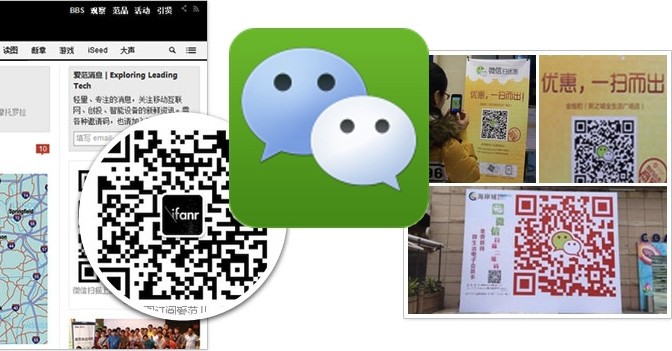In the last couple of years, WeChat marketing has been a hot topic. The app is, by far, the most used one in China and it is estimated to be installed on over 90% of smartphones. The combination of the enormous potential reach and the possibility for brands to connect with their customers in the most intimate way makes WeChat marketing one of the important components of the overall marketing strategy.
On the other hand, many foreign brands, who want to jump in on WeChat, don’t realize that the platform comes with the number of limitations. While in some cases and if done right, WeChat marketing can be incredibly effective, in other cases the results can be quite disappointing.
5 Common Misconceptions about WeChat Marketing
#1 Followers will find you
Unlike other popular social networks, WeChat’s private nature makes discovery quite difficult. WeChat’s own search function only allows looking for an account containing the exact match to a specific word. Even with that, the search results are often inaccurate. There are only a few ways you can acquire a follower:
- Have them scan your QR code placed on other media (website, banner ad, print, billboard etc.);
- Have someone forward a link to your account on WeChat to their friends (essentially word of mouth);
- Having someone to post a nice comment about you in their feed (moments) with the link to your account (KOL);
- In-app advertising – more about it below;
Here is more about getting WeChat followers organically.
#2 No one else can use my brand
Many popular brands who are just getting around starting their WeChat marketing campaigns in China often find out that someone else is already using their brand name and logo. Once an account has been created by someone it can be quite hard to have WeChat remove it. However, ignoring the problem is not a good idea either.
If, following the complaint, the owner of “squatter” account is refusing to comply by changing their WeChat account’s name and logo, it is possible to file a complaint to Tencent by filing proper paperwork. To be successful, the legitimate brand owner has to prove their ownership of the trademark in China which is the whole new topic. More on registering trademarks in China can be found in one of my favorite resources online at China Law Blog.
#3 In-app mobile advertising within WeChat is effective
In fact, advertising within WeChat is notoriously ineffective while also extremely expensive. Click through rate (CTR) of such ads is usually quite low for a number of reasons. The main problem is that once clicked, the user than will be taken out of the app elsewhere, usually to a built-in WeChat browser. Since most people don’t casually browse WeChat but have some purpose while using it, they wouldn’t typically abandon their activity in the middle to be redirected elsewhere.
The ads within user’s Moments (WeChat’s version of feed), are also rarely relevant and are not displayed consistently. Here is my other post about the issues with WeChat advertising.
#4 Recycling of posts from my other social media channels will do just fine on WeChat
Although, it could be an effective strategy to reuse content from other social media channels or blogs for WeChat, the posts are often not optimized for this platform. For example, articles that are too long or those relying too much on the graphics may not render well on WeChat’s smartphone screen.
One of the keys for WeChat marketing is figuring out the posts format that is just right in both size and layout. The graphics should be clear enough while displayed as a thumbnail in multiple picture posts while not looking pixelized when extended to the full screen. That would require some tweaking and testing to get everything right.
Also, if there are external links, they should lead to properly responsive pages that are optimized for mobile.
#5 WeChat marketing allows accurate targeting
We wish that one was true. Unfortunately, it is quite difficult to segment WeChat marketing messages, which is also true for its advertising. On the most basic level, the followers can be segmented only by their location and gender. Even the location is based on whatever WeChat subscriber has set and not on the actual geolocation. Whenever a more granular approach is needed, each individual follower can be tagged and grouped. This would allow sending more targeted messages to a specific audience.
Such segmentation can be either manual – often an extremely time and labor consuming effort, or automated with some 3rd party backend platform customization. The biggest disadvantage of the platform, as compared to other popular social media channels, is its lack of tools to target followers based on their behavior, a crucial component in many effective digital marketing strategies.In conclusion, while WeChat can be a powerful marketing tool in China, it’s important to realize what it can and cannot do. The best use of WeChat would be to deploy it as a one of the marketing elements, closely integrated with other channels, not in isolation.






